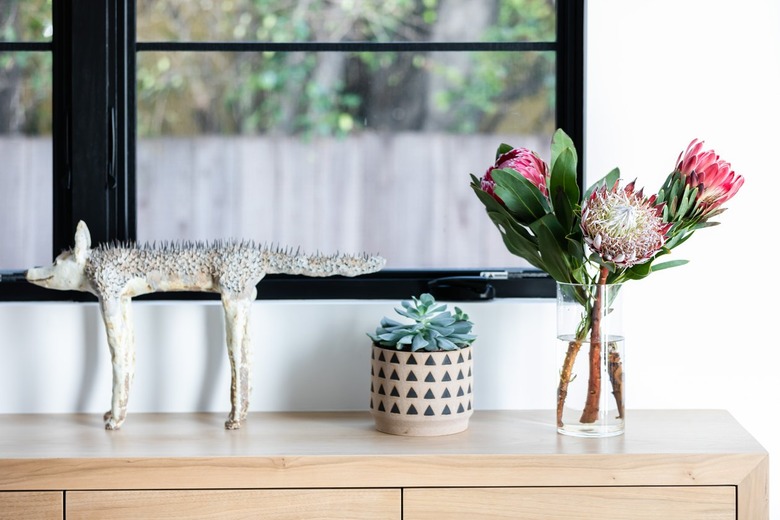Do Cut Flowers Last Longer In Warm Or Cold Water?
We may receive a commission on purchases made from links.
Hot, cold, or lukewarm — which is best for your cut flowers? A fresh bouquet brightens up your space, commemorates milestones, and sends cheer, but the beauty seems to fade faster than you'd like. While the water temperature you choose could impact the flowers, there are also several other factors that can impact how long your flowers last.
Warm Water Benefits
Warm Water Benefits
Warm water is usually the ideal option for cut flowers if they're freshly cut and haven't been stored dry. Many florists use water between 100 and 110 degrees Fahrenheit when storing flowers. Then they put the flowers in a cold environment so they get the combination of warm and cold. Flowers can absorb more of the warm water, and the cold temperature around the blooms helps to keep them fresh.
You can do the same thing at home. If you're cutting flowers out of your garden, keep a bucket of warm water nearby and put them in it right away. Put them in a cold spot in your house for about two hours before you arrange them.
Cold Water Benefits
Cold Water Benefits
Ice-cold water can help your flowers perk up and look great in certain situations. If cut flowers are transported or stored dry instead of being put in water, the stems dry out and form air bubbles. This combination means the flowers can't soak up water when you put them in a vase and can lead to wilting.
Cutting the stems can help remove the dried portion, and spending time in ice-cold water can help get rid of the air bubbles. This opens things up so the stems can absorb the water well. You might notice the wilting disappear after you plunge the flowers in the cold water. However, you don't need to keep the water cold forever. It's mainly to clear the bubbles and get the water flowing well.
Helping Flowers Last Longer
Helping Flowers Last Longer
The water in your vases will eventually reach room temperature no matter what temperature you start with, so choosing the optimal temperature isn't a long-term solution for making your cut flowers last longer. Some other ways to keep your blooms from fading or wilting prematurely include:
- Changing the water: It's a good idea to change the water every two or three days to keep it fresh with less bacteria. With each water change, trim a little bit off the ends of the stems with pruning shears or sharp scissors.
- Using flower food: The packet you get with purchased flowers contains ingredients that help feed the flowers and reduce bacteria in the water, which can help the flowers last longer.
- Removing lower leaves: If you leave extra foliage below the waterline, it can increase bacterial growth in the water, which can shorten the life of your flowers.
- Giving them room: Choose a vase with a small enough opening to give the bouquet shape without being so small that it compresses the stems and makes it difficult for the flowers to get water.
- Choosing a cool spot: Cool spots away from direct sunlight help the blooms last longer. It's also a good idea to keep fruits and vegetables away from the flowers, as the ethylene gas they release can cause wilting.
